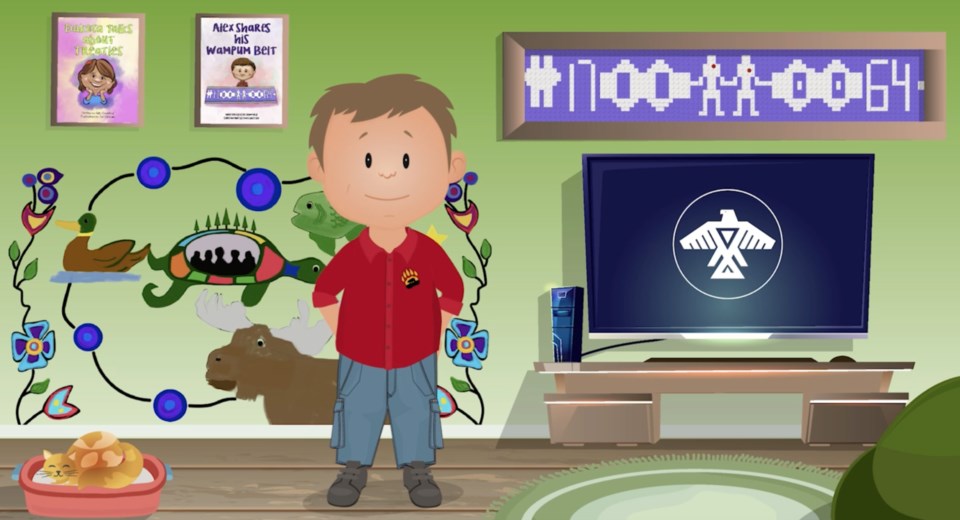The Anishinabek Nation has launched an interactive, online resource aimed at elementary students and new learners to help them better understand First Nations history, treaties and Indigenous rights through the use of animation, videos and virtual reality.
The new online resource, entitled Ezhi-nawending: How we are related, was officially launched during a virtual announcement Wednesday.
“There’s been a lot in the news lately regarding the Robinson-Huron Treaty annuities case which is in the courts, so therefore it’s important to understand that if children learn at an early age about treaties, the treaty relationship and First Nations history, there’s greater understanding and discussions that take place in classrooms and in society in general,” said Anishinabek Nation Grand Council Chief Reg Niganobe. “Through treaty education resources such as ours, the more than 80 per cent of Anishinabek Nation kids off-reserve can learn First Nations history from their own elders and knowledge keepers.”
“Identity - knowing who you are and where you came from – is important for self-esteem and overall mental health. If you have a connection to your community, the land and have an understanding of your history, it makes us as individuals stronger.”
A teacher's guide will be released to accompany the online tool in order to show connections to the Ontario curriculum through lesson plans and suggested activities. Kelly Crawford of Soaring Consulting says that many educators have expressed a fear of getting the facts wrong due to a lack of resources.
“We visited a lot of schools, and we shared with a lot of students - and there’s a lot of fear out there in relation to sort of teaching this content,” said Crawford. “So I think this resource is a good way to bring those voices of our knowledge keepers and our elders into the classroom.”
One of calls to action from the Truth and Reconciliation Commission of Canada calls upon the federal and territorial governments – in consultation and collaboration with residential school survivors, Indigenous peoples and educators – to create age-appropriate curriculum on residential schools, treaties, and Indigenous people’s historical and contemporary contributions to Canada a mandatory education requirement for Kindergarten to Grade 12 students.
“We’re at a wonderful time in our history that we have the ability to use technology and that we’re able to disseminate this information from our perspective, to accurately depict our true history of these lands,” said Ogimaa Duke Peltier of Wiikwemkoong Unceded Territory. “I think it’s important work that the Anishinabek Nation has undertaken with support from the resources and the knowledge keepers that are within the territory, and it’s a welcome addition to much of the education curriculum, and we do hope that the Ontario government, through its Ministry of Education, also supports and provides resources for further curriculum development.”
A preview of Ezhi-nawending: How we are related can be found on the Anishinabek Nation Youtube channel.
